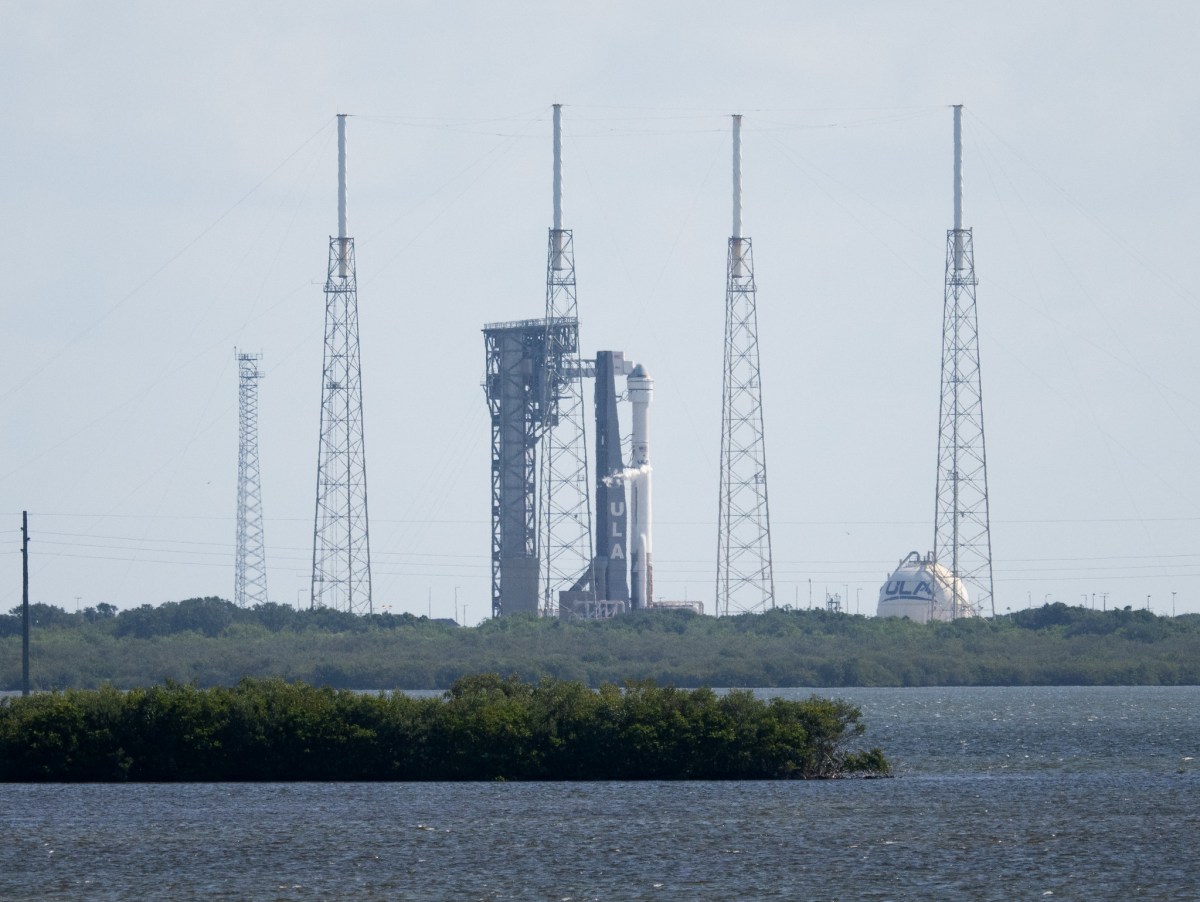Updated 5:45 p.m. Eastern after announcement of the additional launch delay.
KENNEDY SPACE CENTER, Fla. — A last-minute problem scrubbed the Atlas 5 launch of Boeing’s CST-100 Starliner on its first crewed flight June 1, delaying the mission by at least four days.
A ground computer halted the countdown 3 minutes and 50 seconds before the scheduled 12:25 p.m. Eastern launch of the Crew Flight Test (CFT) mission with NASA astronauts Butch Wilmore and Suni Williams on board. Because Starliner has an instantaneous launch window, the hold scrubbed the launch attempt.
At a briefing a few hours after the scrub, Tory Bruno, chief executive of United Launch Alliance, said a card known as the launch sequencer in one of three redundant ground control computers came up slower than the other two when coming out of the T-4 minute hold. “That tripped a red line and triggered an automatic hold,” he said.
He said technicians had not yet been able to access the computers, located near the launch pad, while vehicle propellants are offloaded. He estimates it would take at least a few hours to check the computers and see if any cards or other hardware malfunctioned and needed to be replaced.
“If it’s as simple as replacing a card, we have spares for everything,” he said. That work would be straightforward enough to be completed in time for a June 2 launch attempt, he concluded then. “If it’s more involved than that or just takes longer to get through all of that, then we would move to the backup date of the 5th.” There is another launch opportunity June 6 as well.
In a statement about two hours after the briefing, NASA said there would not be a June 2 launch attempt to give teams more time to study the problem. An update on the next launch attempt is expected on June 2.
NASA, Boeing and United Launch Alliance worked through other minor issues during the countdown. About two hours before the scheduled liftoff, launch controllers reported a problem with valves that control the flow of liquid oxygen and liquid hydrogen into the Centaur upper stage to top off its tanks.
Bruno said at the briefing that one of the three computer racks was not commanding the valves to open, so controllers switched to a different rack. He said it was the same rack that later triggered the hold, but involved a different card. Those cards in general have been reliable, he noted, although he said it was “not unheard of” to have to replace a card.
Less than 20 minutes before liftoff, spacecraft controllers noted a problem with fans that circulate air in the pressure suits Wilmore and Williams were wearing. The fans were working again a few minutes later. Mark Nappi, Boeing vice president and commercial crew program manager, said at the briefing that a voltage change as the spacecraft switched to internal power caused the fans to turn off, and spacecraft controllers turned them back on.
The helium leak found after the previous scrubbed launch attempt May 6 was not an issue with this launch attempt. Controllers reported that the leak rate was acceptable and, in fact, had appeared to decrease.
The last-minute scrub was a disappointment, officials acknowledged. “It’s human to be a little disappointed,” Steve Stich, NASA commercial crew program manager. “What kicks in, and what I saw over in the control room and listening to the loops in Houston, is that everybody is very professional and they’re used to it.”
A slip beyond June 6 could lead to a significantly longer delay. Stich said at a May 31 prelaunch briefing that ULA would need time to replace batteries in the rocket if the vehicle does not launch by June 6. Gary Wentz, vice president of government and commercial programs at ULA, said that battery replacement work would take about 10 days.
NASA officials said earlier this year that they needed to complete the certification of Starliner by November or December so that the first operational mission, Starliner-1, can launch in early 2025 as currently planned. At the prelaunch briefing May 31, Stich declined to say if that schedule will hold even with the delay in launching CFT.
“That will be something that we will work on after the flight,” he said of certification. “The path to Starliner-1 clearly is through Crew Flight Test. That is the most important thing we have towards certification.”
Nappi said May 31 that 80% of the certification plan is already in place and is scheduled to be done by November, but the remainder depends on what happens during the CFT mission, including what in-flight anomalies take place that need to be resolved.
“The longer it takes to fly CFT, the shorter that period becomes for us to review that data,” he said. “Getting the certification review done as soon as we can is important regardless of when we fly.”
